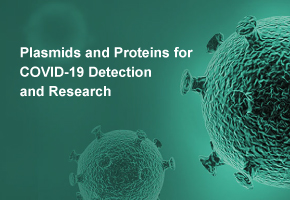Understanding Human PARP1 Knockdown Cell Line - HeLa
The HeLa cell line, derived from cervical cancer cells of Henrietta Lacks in the early 1950s, has become one of the most widely used models in biomedical research. Researchers often manipulate these cells to study various biological processes and disease mechanisms, including the role of specific genes. One such manipulation involves the knockdown of PARP1, an essential enzyme in the regulation of cellular processes such as DNA repair, genomic stability, and programmed cell death.
PARP1, or poly(ADP-ribose) polymerase 1, plays a crucial role in the cellular response to DNA damage. When DNA strands are broken, PARP1 is activated and facilitates the repair process by adding ADP-ribose units to various proteins. This modification recruits other DNA repair factors to the site of damage, thereby promoting cellular integrity. However, aberrant PARP1 activity is associated with multiple cancers, making this enzyme a target for therapeutic intervention.
Creating a HeLa cell line with PARP1 knockdown offers an invaluable tool for studying its biological function and implications in cancer. Researchers employ various techniques to achieve knockdown, including small interfering RNA (siRNA) or CRISPR/Cas9 technology, both of which effectively reduce the expression of the PARP1 gene. Once established, this modified cell line allows for the examination of how reduced PARP1 activity affects cellular processes such as apoptosis, cell cycle progression, and sensitivity to chemotherapeutic agents.
Investigations using the PARP1 knockdown HeLa cell line have revealed significant insights into the mechanisms of DNA repair and the potential vulnerabilities in cancer cells. For instance, studies have shown that lower levels of PARP1 can sensitize cells to specific DNA-damaging agents, suggesting that targeting PARP1 with inhibitors could enhance the efficacy of conventional cancer therapies. This sensitivity highlights the development of PARP inhibitors that are currently in clinical use for treating cancers with defective DNA repair pathways, such as BRCA-mutated breast and ovarian cancers.
Moreover, the utilization of PARP1 knockdown HeLa cells also extends to understanding cellular responses to oxidative stress and identifying potential biomolecular targets for new therapeutic strategies. By studying these modified cells’ response profiles, researchers can uncover novel insights into how alterations in the DNA repair landscape contribute to tumor progression and resistance to treatment.
In summary, the Human PARP1 knockdown HeLa cell line serves as a critical instrument in cancer research. It aids in deciphering the complex interplay between DNA damage response and cancer biology. As researchers continue to explore this avenue, the findings may lead to enhanced cancer therapies and improved outcomes for patients battling various malignancies. The ongoing work with this cell line underscores the importance of understanding fundamental cellular processes and their implications for health and disease.
- Like
- Reply
-
Share
About Us · User Accounts and Benefits · Privacy Policy · Management Center · FAQs
© 2025 MolecularCloud



